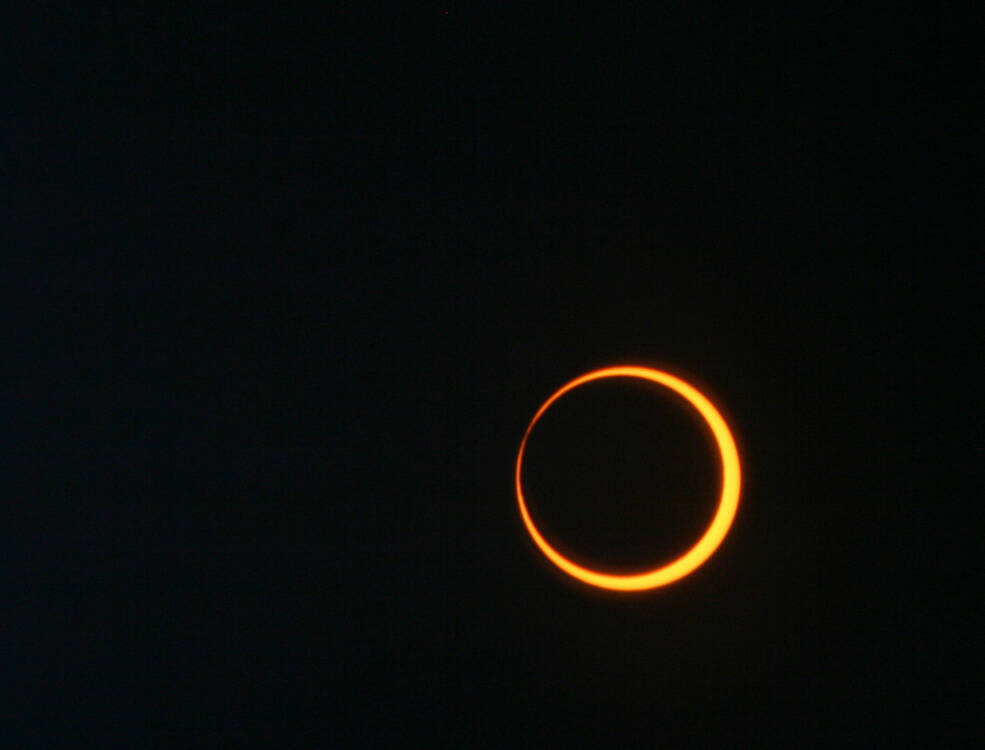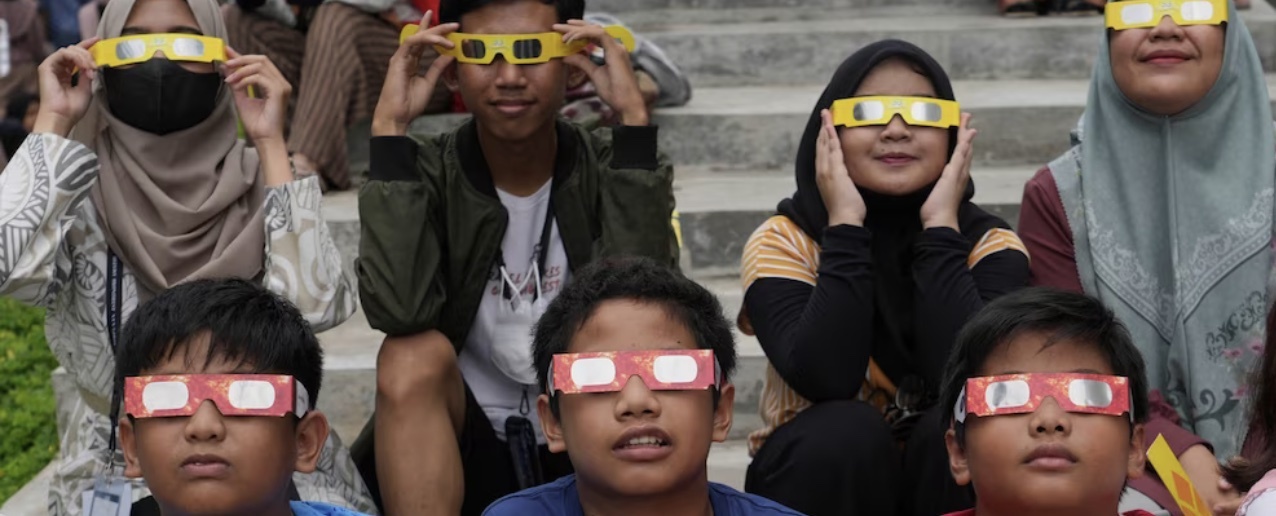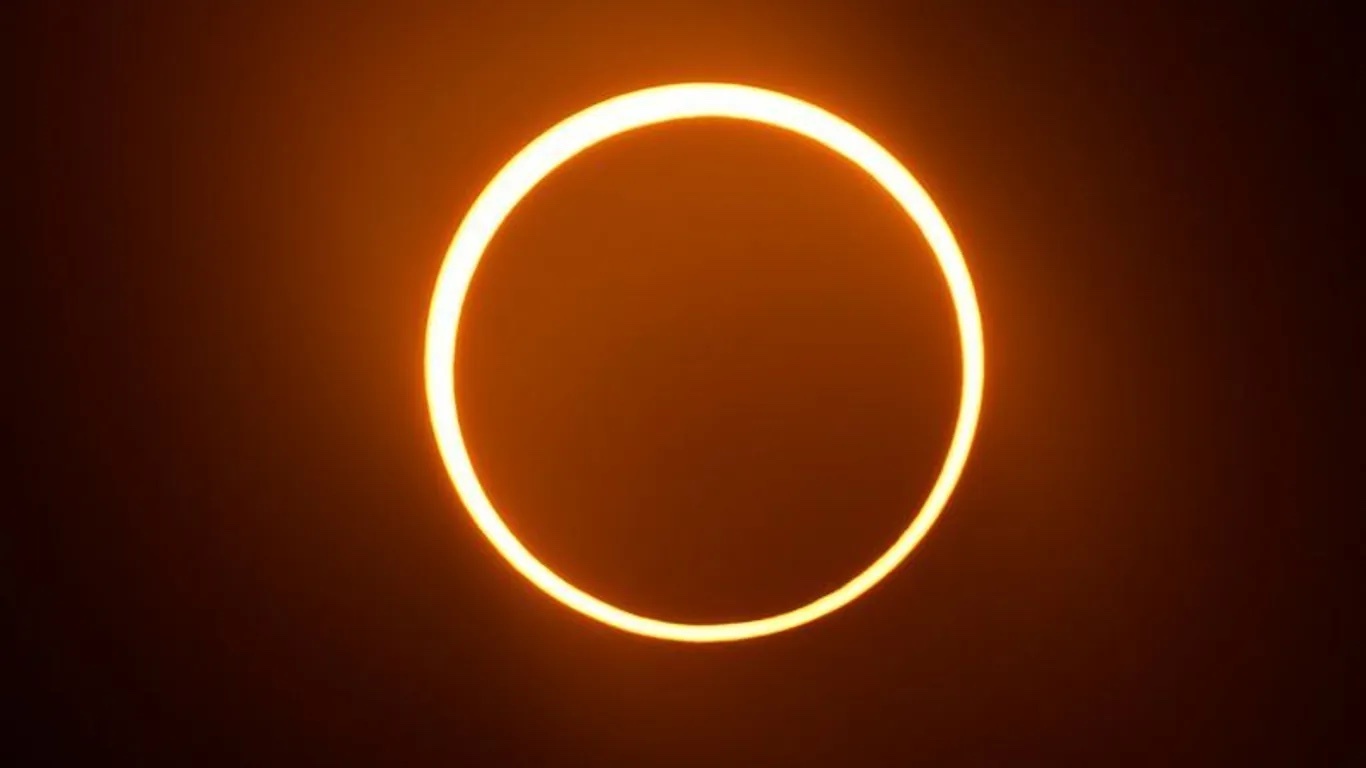24.09.2023

NASA will host a media teleconference at 4 p.m. EDT on Tuesday, Sept. 26, to discuss the upcoming annular solar eclipse. The annular eclipse will cross the U.S. from Oregon to Texas on Saturday, Oct. 14, with a partial solar eclipse visible throughout the contiguous U.S.
Audio of the call will stream live on NASA's website.
The following participants will discuss the science of eclipses, how to safely watch the Oct. 14 eclipse, and the next total solar eclipse on April 8, 2024:
- Peg Luce, acting Heliophysics division director, NASA Headquarters
- Madhulika Guhathakurta, heliophysics program scientist, NASA Headquarters
- Elizabeth MacDonald, heliophysics citizen science lead, NASA’s Goddard Space Flight Center
- Alex Lockwood, strategic content and integration lead for NASA’s Science Mission Directorate, NASA Headquarters
To ask questions during the teleconference, media must RSVP no later than two hours before the event to Sarah Frazier at sarah.frazier@nasa.gov. NASA's media accreditation policy is available online.
Also known as a "ring of fire" eclipse, an annular solar eclipse occurs when the Moon is near the part of its orbit that is most distant from Earth. Because the Moon is farther from Earth than it is during a total solar eclipse, the Moon doesn't block out the entire Sun, instead it leaves a bright ring of Sun visible at the peak of the eclipse.
This "ring of fire" is visible only in the narrow path of annularity that stretches from Oregon to Texas, as well as parts of Mexico, Central America, and South America. Outside the path of annularity, people across the contiguous U.S., Puerto Rico, and parts of Alaska and Hawaii will have the chance to see a partial solar eclipse, when the Moon covers part of the Sun without creating the "ring of fire" effect.
All eclipse-watchers on Oct. 14 will need to use special eye protection – such eclipse glasses or a specialized solar filter – or an indirect viewing method to safely watch the eclipse. Such safety measures must be used throughout the entire eclipse, no matter a viewer's location, as even the small ring of Sun visible at the peak of the annular eclipse is dangerous if viewed directly.
Live coverage of the annular solar eclipse will air on NASA TV and the agency’s website on Oct. 14 from 11:30 a.m. to 1:15 p.m.. The public also can watch live on agency social media accounts on Facebook, X, and YouTube.
Quelle: NASA
----
Update: 12.10.2023
.
'Ring of fire' solar eclipse will slice across Americas on Saturday with millions along path
Tens of millions in the Americas are getting front-row seats for a rare “ring of fire” eclipse of the sun

Tens of millions in the Americas will have front-row seats for Saturday's rare “ring of fire” eclipse of the sun.
What's called an annular solar eclipse — better known as a ring of fire — will briefly dim the skies over parts of the western U.S. and Central and South America.
As the moon lines up precisely between Earth and the sun, it will blot out all but the sun’s outer rim. A bright, blazing border will appear around the moon for as much as five minutes, wowing skygazers along a narrow path stretching from Oregon to Brazil.
The celestial showstopper will yield a partial eclipse across the rest of the Western Hemisphere.
It’s a prelude to the total solar eclipse that will sweep across Mexico, the eastern half of the U.S. and Canada, in six months. Unlike Saturday, when the moon is too far from Earth to completely cover the sun from our perspective, the moon will be at the perfect distance on April 8, 2024.
Here’s what you need to know about the ring of fire eclipse, where you can see it and how to protect your eyes:
The eclipse will carve out a swath about 130 miles (210 kilometers) wide, starting in the North Pacific and entering the U.S. over Oregon around 8 a.m. PDT Saturday. It will culminate in the ring of fire a little over an hour later. From Oregon, the eclipse will head downward across Nevada, Utah, New Mexico and Texas, encompassing slivers of Idaho, California, Arizona and Colorado, before exiting into the Gulf of Mexico at Corpus Christi. It will take less than an hour for the flaming halo to traverse the U.S.
From there, the ring of fire will cross Mexico's Yucatan Peninsula, Belize, Honduras, Nicaragua, Costa Rica, Panama, Colombia and, finally, Brazil before its grand finale over the Atlantic.
The entire eclipse — from the moment the moon starts to obscure the sun until it’s back to normal — will last 2 1/2 to three hours at any given spot. The ring of fire portion lasts from three to five minutes, depending on location.
In the U.S. alone, more than 6.5 million people live along the so-called path of annularity, with another 68 million within 200 miles (322 kilometers), according to NASA’s Alex Lockwood, a planetary scientist. “So a few hours’ short drive and you can have over 70 million witness this incredible celestial alignment,” she said.
At the same time, a crescent-shaped partial eclipse will be visible in every U.S. state, although just barely in Hawaii, provided the skies are clear. Canada, Central America and most of South America, also will see a partial eclipse. The closer to the ring of fire path, the bigger the bite the moon will appear to take out of the sun.
Can't see it? NASA and others will provide a livestream of the eclipse.
Be sure to use safe, certified solar eclipse glasses, Lockwood stressed. Sunglasses aren't enough to prevent eye damage. Proper protection is needed throughout the eclipse, from the initial partial phase to the ring of fire to the final partial phase.
There are other options if you don’t have eclipse glasses. You can look indirectly with a pinhole projector that you can make yourself, including one made with a cereal box.
Cameras — including those on cellphones — binoculars, or telescopes need special solar filters mounted at the front end.
One patch of Texas near San Antonio will be in the cross-hairs of Saturday’s eclipse and next April’s, with Kerrville near the center. It's one of the locations hosting NASA's livestream.
“Is the city of Kerrville excited? Absolutely!!!” Mayor Judy Eychner said in an email. “And having NASA here is just icing on the cake!!!”
With Saturday’s eclipse coinciding with art, music and river festivals, Eychner expects Kerrville’s population of 25,000 to double or even quadruple.
April’s total solar eclipse will crisscross the U.S. in the opposite direction. It will begin in the Pacific and head up through Mexico into Texas, then pass over Oklahoma, Arkansas, Missouri, Illinois, Indiana, Ohio, the northern fringes of Pennsylvania and New York, and New England, before cutting across Canada into the North Atlantic at New Brunswick and Newfoundland. Almost all these places missed out during the United States’ coast-to-coast total solar eclipse in 2017.
It will be 2039 before another ring of fire is visible in the U.S., and Alaska will be the only state then in the path of totality. And it will be 2046 before another ring of fire crosses into the U.S. Lower 48. That doesn't mean they won't be happening elsewhere: The southernmost tip of South America will get one next October, and Antarctica in 2026.
NASA and others plan a slew of observations during both eclipses, with rockets and hundreds of balloons soaring.
“It’s going to be absolutely breathtaking for science,” said NASA astrophysicist Madhulika Guhathakurta.
Embry-Riddle Aeronautical University’s Aroh Barjatya will help launch three NASA-funded sounding rockets from New Mexico’s White Sands Missile Range before, during and after Saturday’s eclipse. The goal is to see how eclipses set off atmospheric waves in the ionosphere nearly 200 miles (320 kilometers) up that could disrupt communications.
Barjatya will be just outside Saturday’s ring of fire. And he’ll miss April’s full eclipse, while launching rockets from Virginia’s Wallops Island.
“But the bittersweet moment of not seeing annularity or totality will certainly be made up by the science return,” he said.
Quelle: abcNews
----
Update: 15.10.2023
.
Menschen in Amerika bewundern Ring-Sonnenfinsternis

die-feuerkranz-sonnenfinsternis-nicht-nur-am-himmel-ueber-san-antonio-im-us-bundesstaat-texas-war-das-naturschauspiel-zu-sehen
Über Nord-, Mittel- und Südamerika war am Samstag ein seltenes Naturschauspiel zu bestaunen: eine Feuerkranz-Sonnenfinsternis. Die nächste Eklipse steht erst im kommenden Jahr an.
Millionen Menschen in Teilen von Nord-, Süd- und Mittelamerika haben eine seltene Feuerkranz-Sonnenfinsternis bewundert. Mit speziellen Schutzbrillen ausgestattet kamen sie vielerorts, beispielsweise in Albuquerque im US-Bundesstaat New Mexico, zum gemeinsamen Betrachten des Naturschauspiels zusammen.
Bei einer Feuerkranz-Sonnenfinsternis, auch ringförmige Sonnenfinsternis genannt, schiebt sich der Mond vor die Sonne, der äußere Rand bleibt aber sichtbar. Am ausgeprägtesten war die Sonnenfinsternis nach Angaben der US-Raumfahrtagentur Nasa vor allem in Teilen der US-Bundesstaaten Oregon, Nevada, Utah, Arizona, New Mexico und Texas sowie in Teilen von Mexiko, Belize, Honduras, Nicaragua, Costa Rica, Panama, Kolumbien und Brasilien.
Maximale Dauer der Sonnenfinsternis über Panama
Die Sichtbarkeit der ringförmigen Sonnenfinsternis wanderte in einem schmalen Streifen von Nordwesten nach Südosten über den amerikanischen Kontinent. Über Panama wurde die maximale Dauer der ringförmigen Phase von fünf Minuten und 17 Sekunden erreicht. Partielle Phasen der Finsternis waren in weiten Bereichen der USA zu sehen, allerdings verhinderten beispielsweise an Teilen der US-Ostküste Regenwolken einen Blick auf das Himmelsschauspiel. In ganz Europa war das Phänomen unbeobachtbar.
Eine ringförmige Sonnenfinsternis entsteht, wenn sich der Mond zentral vor die Sonne schiebt, in diesem Moment aber einen vergleichsweise großen Abstand zur Erde hat. Dadurch verdeckt der Erdtrabant die Sonnenscheibe nicht komplett. Im April 2024 ist für Teile von Nordamerika auch wieder eine totale Sonnenfinsternis angekündigt.
Quelle: t-online
